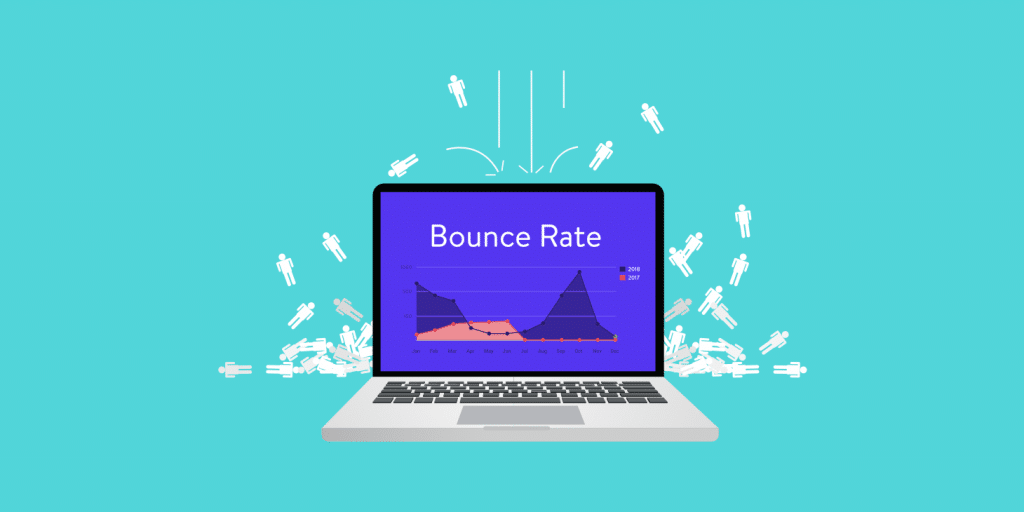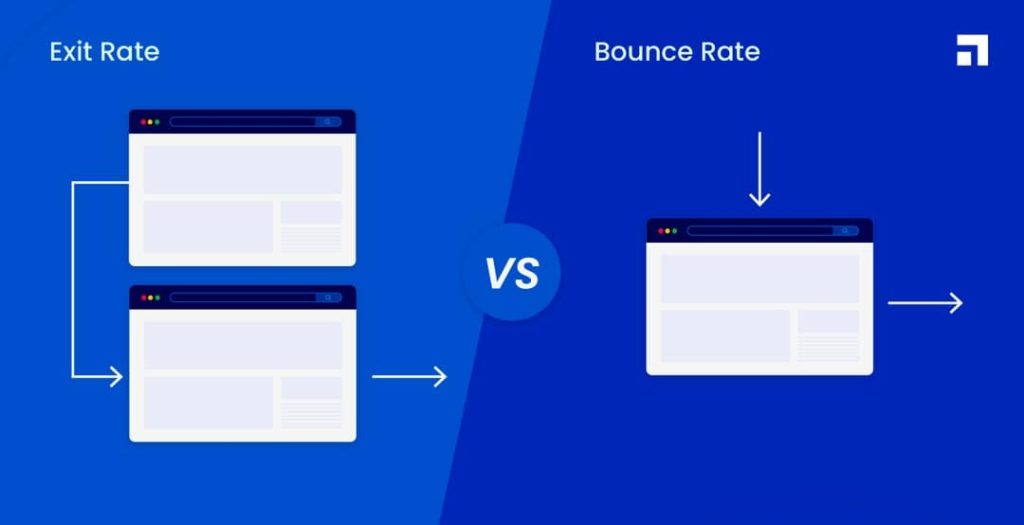7 Min Read
Bounce rate and exit rate are two metrics that are essential for understanding the engagement of your website’s visitors. Bounce rate refers to the percentage of visitors who leave your site after only viewing one page, while exit rate refers to the percentage of visitors who leave your site after viewing multiple pages. Both metrics can provide valuable insights into the behavior of your website’s visitors and can help you identify areas for improvement.
The purpose of this article is to help readers understand the differences between bounce and exit rates and how to optimize both for better website engagement and conversions. By the end of this article, you will have a clear understanding of what these metrics mean, why they are important, and how to improve them to boost your website’s performance.

What is the Bounce Rate?
Bounce rate is the percentage of visitors who leave your website after only viewing one page. This can happen for a variety of reasons, including slow page load speed, irrelevant content, poor user experience, and confusing navigation. High bounce rates can be problematic because they indicate that visitors are not finding what they are looking for on your website and are leaving without taking any further action.
To reduce bounce rates, it is important to focus on improving the user experience of your website. This can be done by improving page load speed, optimizing content for user intent, improving navigation and UX, and ensuring that your website is mobile-friendly. By addressing these issues, you can create a more engaging and user-friendly website that encourages visitors to stay longer and explore more pages.

What is Exit Rate?
Exit rate is the percentage of visitors who leave your website after viewing multiple pages. Unlike bounce rate, which only measures visitors who leave after viewing one page, exit rate measures visitors who leave at any point during their session. This can include visitors who have completed a desired action, such as making a purchase or filling out a contact form.
While exit rates are not necessarily a bad thing, they can indicate areas where your website could be improved to encourage visitors to stay longer and take further action. To reduce exit rates, it is important to offer relevant internal links to encourage visitors to explore more pages on your website, optimize calls-to-action to encourage visitors to take desired actions, and improve the checkout process to reduce cart abandonment.
Key Differences Between Bounce and Exit Rates

The main difference between bounce and exit rates is that bounce rate measures visitors who leave after viewing only one page, while exit rate measures visitors who leave at any point during their session. While both metrics are important to track for a comprehensive understanding of website engagement and conversion, they provide different insights into visitor behavior and should be analyzed separately.
Bounce rate is a more immediate indicator of potential issues with your website, such as slow page load speed or irrelevant content, while exit rate is a more general indicator of visitor behavior throughout their session. By tracking both metrics, you can identify areas for improvement and take action to optimize your website for better engagement and conversions.
How to Optimize Both Bounce and Exit Rates
To optimize both bounce and exit rates, it is important to focus on improving the overall user experience of your website. This can be done by improving page load speed, optimizing content for user intent, improving navigation and UX, offering relevant internal links, optimizing calls-to-action, and improving the checkout process.
It is also important to use data to inform decision-making and to test and experiment with different solutions to find the best strategies for your specific website and audience. By continuously monitoring and optimizing both bounce and exit rates, you can create a more engaging and effective website that encourages visitors to stay longer and take desired actions.
Bounce and exit rates are two important metrics for understanding the engagement of your website’s visitors. By tracking and optimizing these metrics, you can create a more user-friendly website that encourages visitors to stay longer and take desired actions. To reduce bounce rates, focus on improving the user experience of your website, while to reduce exit rates, offer relevant internal links, optimize calls-to-action, and improve the checkout process.
Remember that both bounce and exit rates provide different insights into visitor behavior and should be analyzed separately. By tracking both metrics, you can identify areas for improvement and take action to optimize your website for better engagement and conversions.
Finally, it is important to use data to inform decision-making and to test and experiment with different solutions to find the best strategies for your specific website and audience. By continuously monitoring and optimizing both bounce and exit rates, you can create a more engaging and effective website that encourages visitors to stay longer and take desired actions.
Stay tuned for more blog articles filled with actionable tips and insights to help you boost your website’s engagement and conversions!



